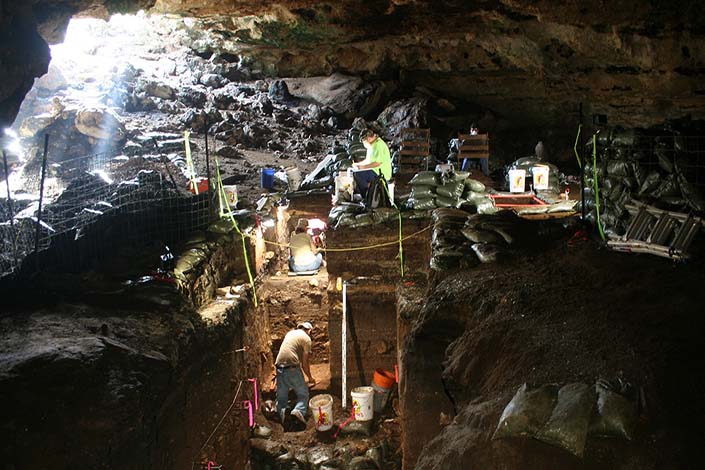Cooling of Earth caused by eruptions, not meteors

Ancient sediment found in a central Texas cave appears to solve the mystery of why the Earth cooled suddenly about 13,000 years ago, according to a research study co-authored by a Texas A&M University professor.
Michael Waters, director of The Center for The Study of the First Americans and Distinguished Professor at Texas A&M University, and colleagues from Baylor University and the University of Houston have had their work published in Science Advances.
Some researchers believed the event – which cooled the Earth by about 3 degrees Centigrade, a huge amount – was caused by an extraterrestrial impact with the Earth, such as a meteor collision.
But Waters and the team found that the evidence left in layers of sediment in Hall’s Cave were almost certainly the result of volcanic eruptions.
Waters said that Hall’s Cave, located in the Texas hill country, has a sediment record extending over 20,000 years and he first began researching the cave in 2017.
“It is an exceptional record that offers a unique opportunity for interdisciplinary cooperation to investigate a number of important research questions,” he said.
“One big question was, did an extraterrestrial impact occur near the end of the last ice age, about 13,000 years ago as the ice sheets covering Canada were melting, and cause an abrupt cooling that thrust the northern hemisphere back into the ice age for an extra 1,200 years?”
Waters and the team found that within the cave are layers of sediment, first identified by Thomas Stafford (Stafford Research Laboratories, Colorado), that dated to the time of the proposed impact that could answer the question and perhaps even identify the trigger that started the ancient cold snap.
The event also likely helped cause the extinction of large mammals such as mammoth, horse and camel that once roamed North America.

